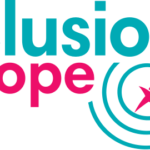Click on a word which is in bold to read what it means.


Women with intellectual disabilities
tell their stories about violence in institutions
It is very hard to talk about
violence against women.
It is hard because the women think
that no one will believe them.
It is even harder for women
with intellectual disabilities
who live in institutions.
In institutions it is hard to find
people you can talk to.

Inclusion Europe wrote a report on this topic.
We talked about it
at the European Parliament.
This report is about the stories
of women with intellectual disabilities
who experienced violence in institutions.
In this report the women
tell their own stories
in their own words.

At the European Parliament
two important politicians listened
to the women’s stories.
One important thing written in the report
is sometime no one sees violence happening.

Mirjam is a self-advocate.
Mirjam gave examples
of violence that is hard to see:
- When you need to take pills
even if you do not want them, - When you are told to shut up,
- When you do not have the chance
to make decisions for yourself.

This type of violence does not leave marks on your body.
So it is hard to explain what happened
and get help.
So people just try to help themselves.
- People try to help themselves in different ways.
For example:They do not do things that can hurt them. - They do not tell anyone how they feel.
- They get angry all the time.
- They sleep all the time.

All these things are signs
that they are not happy
and need help.
Even when women have left the institutions,
they cannot forget the bad things
that happened to them.
Mirjam says that her biggest fear
is to go back to an institution.
Sometimes Mirjam feels good about something.
But then she is afraid that someone will come
and take that good feeling away from her.
The report also talks about
how to make the situation better
for women with intellectual disabilities.

For example:
- We need inclusive education
at every age. - Institutions should be closed down.
This is called deinstitutionalisation. - Women with intellectual disabilities
should all live in the community.

Many people with intellectual disabilities
still live in institutions.
This is why the institutions also need a plan
to fight against violence.
People with intellectual disabilities
should say if the plan works.
If you want to read the report in easy-to-read,
click here.



Catia spoke about violence
against women with disabilities
in the European Parliament.
If you want to read an interview with Catia,
click here.





